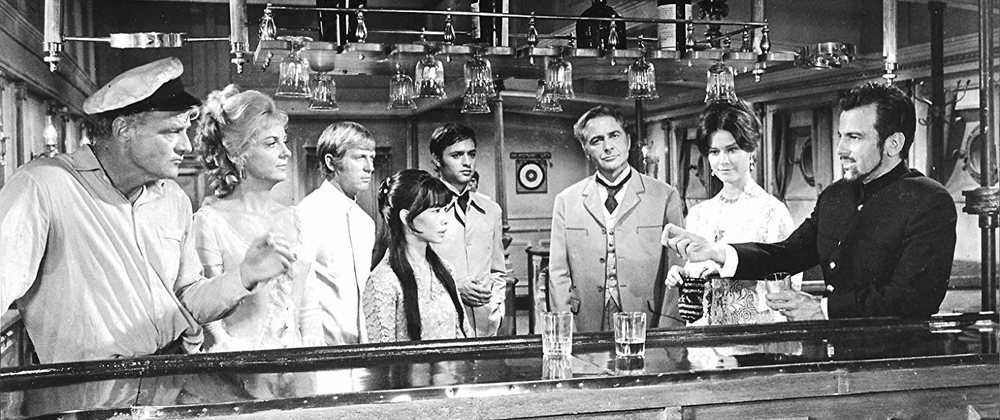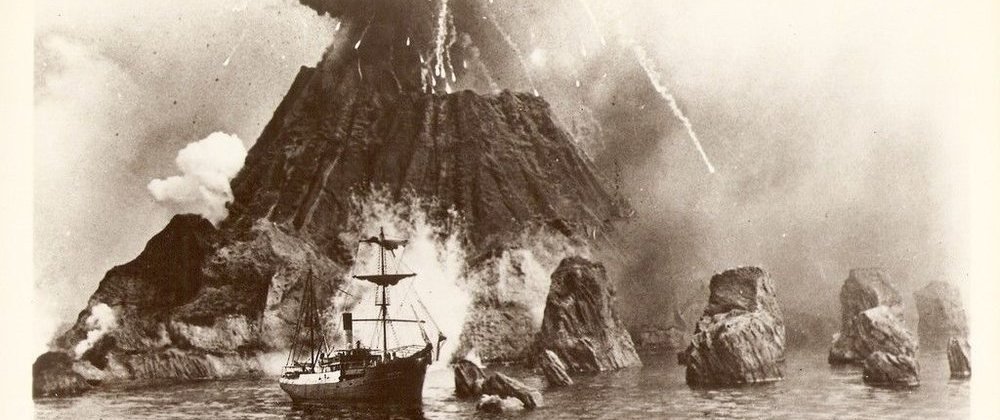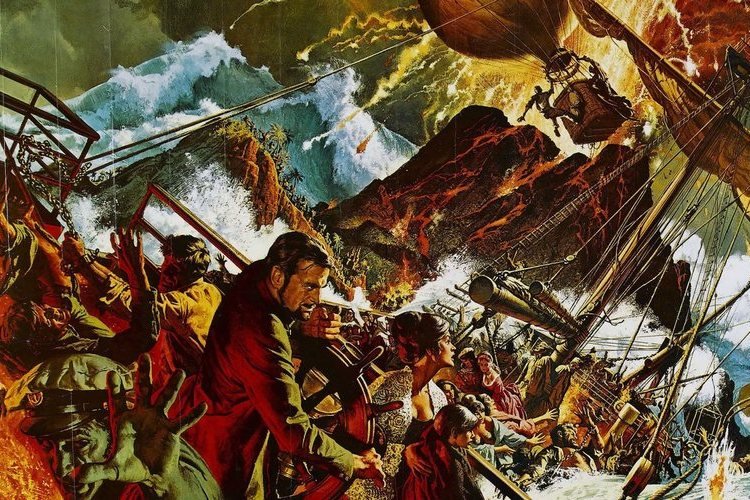KRAKATOA: EAST OF JAVA: The Volcanic Shot Across The Disaster Movie Bow
Disaster movies have been with us since the silent filmera but common wisdom has the prime era of disaster movies beginning in 1970with Airport. However, a long-in-development epic releasedthe previous year feels like it was the shot across the bow for this infamouscelluloid trend. The movie in question is called Krakatoa: East Of Java and, like Airport, it plays like a kind of cinematic turning point that showsold Hollywood trends giving way to newer ones under the roof of one film.

The premise of Krakatoa:East Of Java throws everything at the wall to see what sticks. The heart ofthe plot involves ship captain Chris Hanson (Maximillian Schell) taking hisvessel The Batavia Queen to the title location. The purpose is twofold. Hislover Laura (Diane Baker) is on ship and he wants to help her find her son, whomight have perished in a shipwreck near Krakatoa when her angry husbandspirited him away. There's also a fortune in pearls that went down with theship.
To aid in his search, Chris has assembled a colorfulteam of experts in different fields: Douglas Rigby (John Leyton) is theowner/operator of a diving bell, Giovanni (Rosanno Brazzi) and Leoncavallo (SalMineo) are a father/son balloonist team and Harry (Brian Keith) is a secretlyailing diver who has brought his saloon singer mistress Charley (Barbara Werle)on the voyage. Another complication isadded to the trip when the British government demands that Chris take on 30prisoners in the ship's hold. What no one knows is the volcano on Krakatoa isprimed for a legendary eruption that will endanger the entire chain of islandsand anyone nearby.

The result earned an Oscar nomination for its special effects but didn't curry much favor with critics and is mostly forgotten today. When it is remembered, it is often as a punchline (wags often point out that Krakatoa is actually west of Java on maps). In fairness to critics, it had a convoluted production history that is noticeable in the finished product. The special effects were filmed before the script was completed and when original producer Philip Yordan left the project, the existing script was rewritten to be a little more adult in tone. Thus, you might notice some tonal whiplash between the film's general family approach and elements like a PG-13 striptease and a drug freakout scene.
However, the stitched-together story line and tonalloop-de-loops are part of the fun here if you're in the right mood. Krakatoa: East Of Java is fascinatingexample of big-budget film fare in transition. It's got one foot inold-fashioned, family-friendly adventure of the Jules Verne ilk, complete withadventures in hot air balloons and diving bells, but its other foot is steppinginto the more daring nature of '70s Hollywood fare with its accent onlarge-scale destruction and undertones of seamy melodrama. One minute you're enjoying a sappy songpenned by Mack David and the next you're seeing an exploitation movie-styled hallucinationscene with trippy opticals and a sexy Asian woman in peril. You can see the change of the guard happeningbefore your eyes in one film and that gives it a rollercoaster-style appeal.

Krakatoa:East Of Java also has a number of underrated strengths.The first is an intriguingly eclectic cast. Schell is a unique choice forleading man, bringing a professionalism and intensity normally applied inheavyweight drama and using it to centera light adventure story. Baker offsets his work in an interesting way with ashowier, "women's melodrama" style of acting that fits heremotionally overheated plot thread and Keith uses an old-schoolstoic/hardboiled approach here that has similar appeal. You get further studio system-style melodramafrom the pairing of Brazzi and Mineo as the tempestuous father/son duo and thebacking cast boasts familiar faces like Marc Lawrence and Geoffrey Holder.
Another key strength of the film is energetic directionfrom Bernard Kowalski. He was a prolific journeyman who mainly did t.v. in hiscareer but also had training in the world of exploitation films. He puts afocus on brisk editing and flashy visuals here, giving an unexpected level ofenergy to the film's more conventional first half. Even better, when the adventure-driven secondhalf kicks in, he piles on cliffhanger after cliffhanger (volcanic eruptions,diving and balloon setpieces, a jailbreak, etc.) right up to the closingcredits. He seems to be having a ballwith the big budget resources he had here - this is easily the biggestproduction in his filmography - and he dishes out all the large-scaleexcitement and visual opulence this deluxe production can offer.

Finally, there are the effects. If CGI leaves you coldand you get nostalgic for the era of practical effects, Krakatoa: East Of Java is the movie for you. All the disaster scenes are achieved via amixture of practical FX, scale models and old-school opticals. The model work in particular is fantastic andwas masterminded by Eugene Lourie, a jack-of-all-trades who worked witheveryone from Jean Renoir to Ray Harryhausen. An extended sequence involvingthe Batavia Queen sailing dangerously close to the erupting volcano is the kindof thing where you might forget to breathe while you're watching. If youappreciate hand-crafted special effects, this is the kind of thing that makesyour heart sing.
In short, Krakatoa: East Of Java might be a messy collision of moods and story concepts but it's also the kind of jumbo-size, practical FX-packed indulgence that you can't get anymore. It also predicts the format of the '70s-era disaster movie in ways that make in necessary viewing for fans of that subgenre.


